Salesforce Version Control in Blue Canvas
How to use the Blue Canvas UI to see everything that is happening on your Salesforce Orgs over time
The Blue Canvas UI has four major components: Dasboard, Files, Activity, Compare and Deploy.
Dashboard, to view your Salesforce Pipeline
The Branches tab is where you can see your deployment pipeline at a glance, and where you can connect additional Salesforce Orgs to Blue Canvas.
To connect an Org click Connect an Org or +New Branch in the appropriate column. Developer Edition and Sandboxes should be added in the Development column. UAT and Staging environments should be connected in the UAT swim lane. And finally your production Org belongs in the Production swim lane. You can have as many orgs in each column as you like. And you can deploy between any org in any direction.
The connection with Salesforce is securely established with OAuth 2.0, and Blue Canvas never reads your Salesforce credentials.
You can choose a name for your branch for easier tracking. Each Salesforce Org is associated with one branch on the Git repo. All changes that happen on that Org will be tracked in the Git branch associated with that Org.
Tracking Declarative Changes
For example, if someone logs into a Sandbox Org and makes a declarative change to a Workflow Rule in the Salesforce UI, Blue Canvas will commit that change into the Git history for that Org’s branch. If someone deploys a new Apex Class or Visualforce Page with change sets, an Ant script or MavensMate, that will also now appear in the Git history for that Org’s branch in Blue Canvas.
Files, to browse your org like a code repo
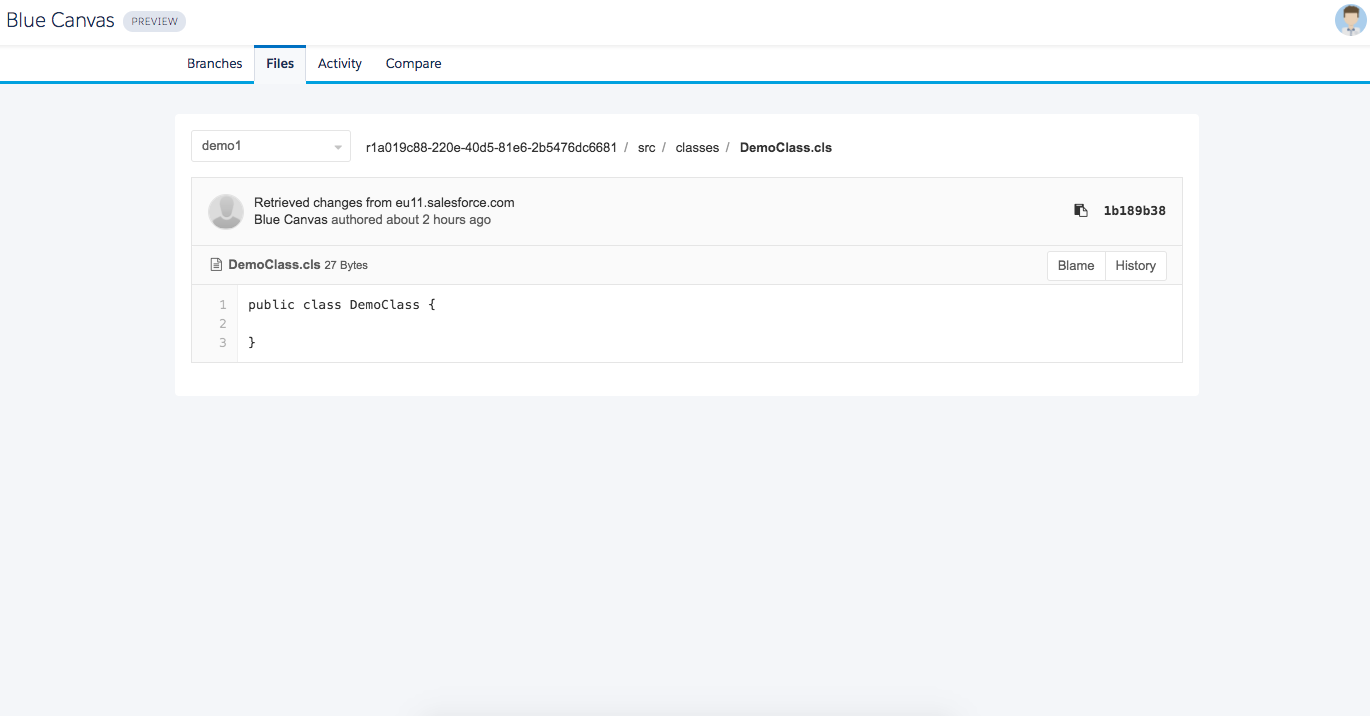
Blue Canvas keeps your Git repo in sync with your Salesforce Orgs in real time. On the Files tab you can browse through your code base to see what is actually live in production at any given moment. This is handy if you want to get a sense for how things look on an Org in real time. It’s also useful if you’re debugging and you want to make sure that your code deployed as you expected it would.
You can navigate the Files tree as you would any directory structure. The main benefit here is that everything is kept in sync in real time.
To see a list of all commits that have ever happened on a particular file go to the History view.
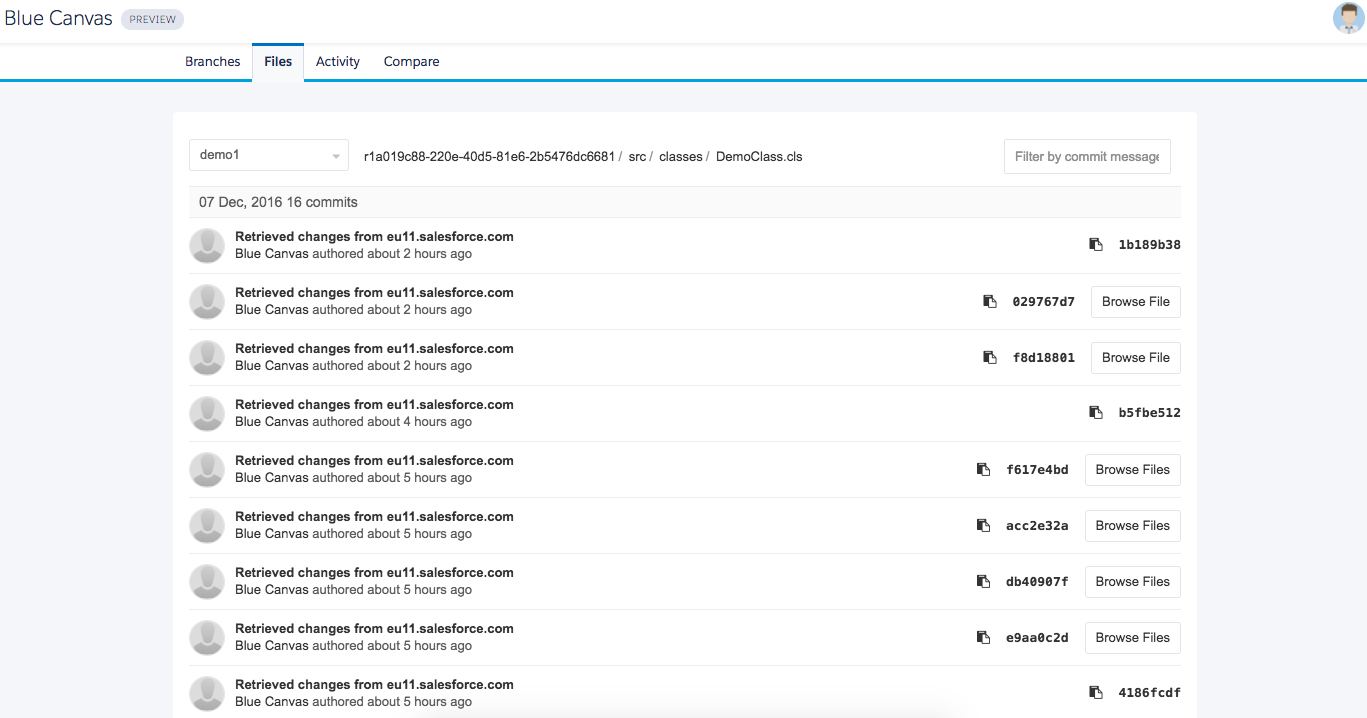
You can also use the Blame view to see line by line who contributed to the file’s current state and when.
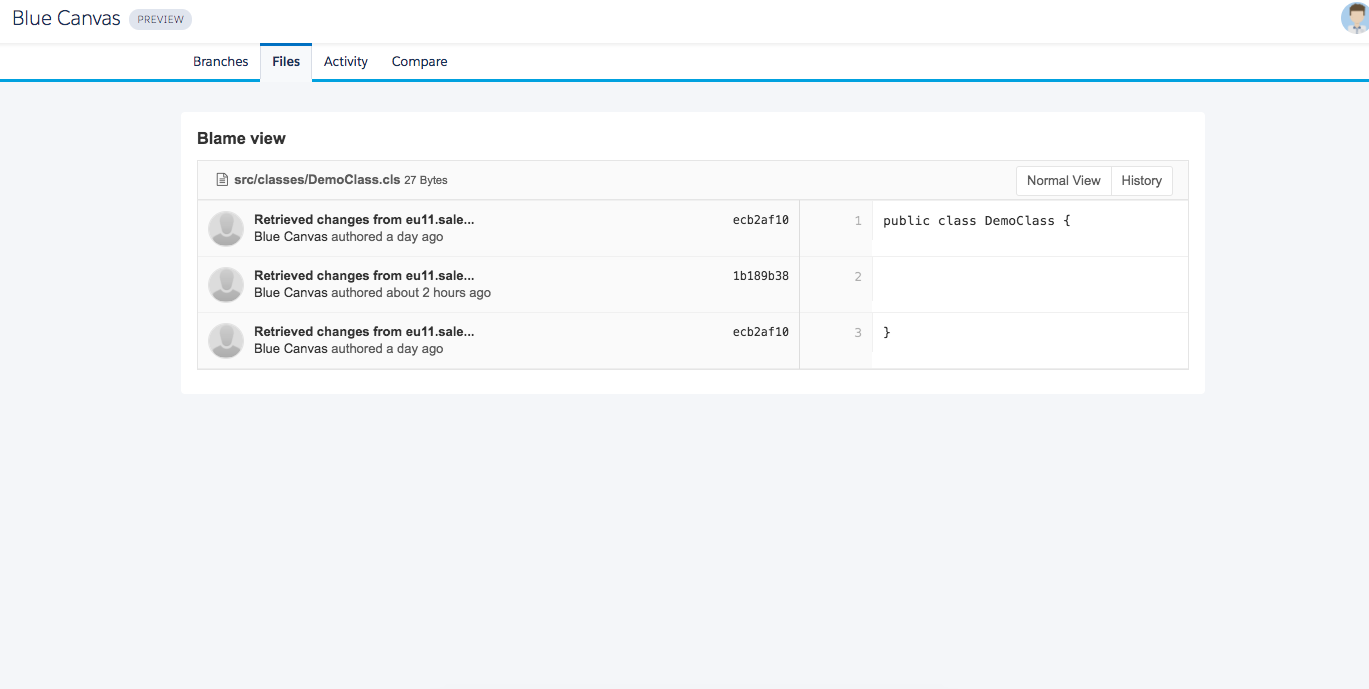
Activity, for real-time Audit Trailing
The Activity tab is a basic dashboard for all activity that is happening on your connected Salesforce Orgs at a given time. You can see who is changing which files and when.
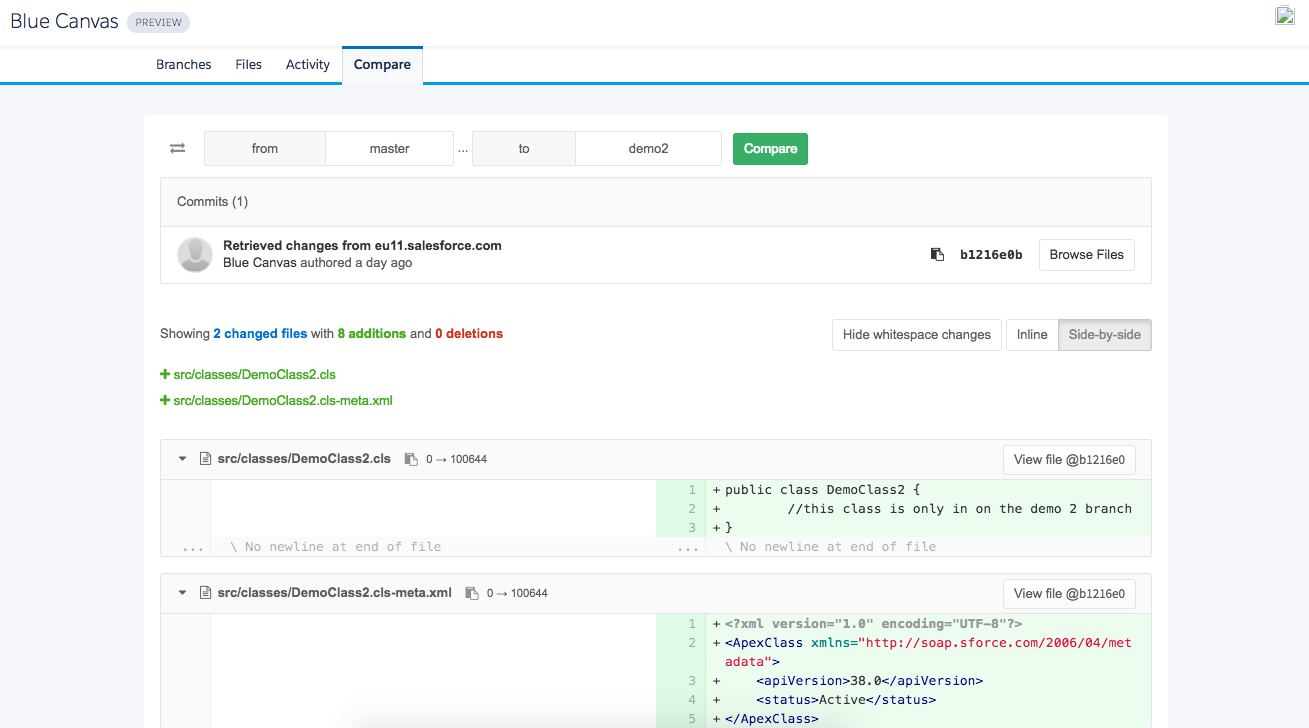
History, for Salesforce Version Control
The History tab lets you explore the precise changelog for any given Org (a.k.a. Branch in Blue Canvas). Understand what changed, when, whom authored the change, and review commits individually if need be.
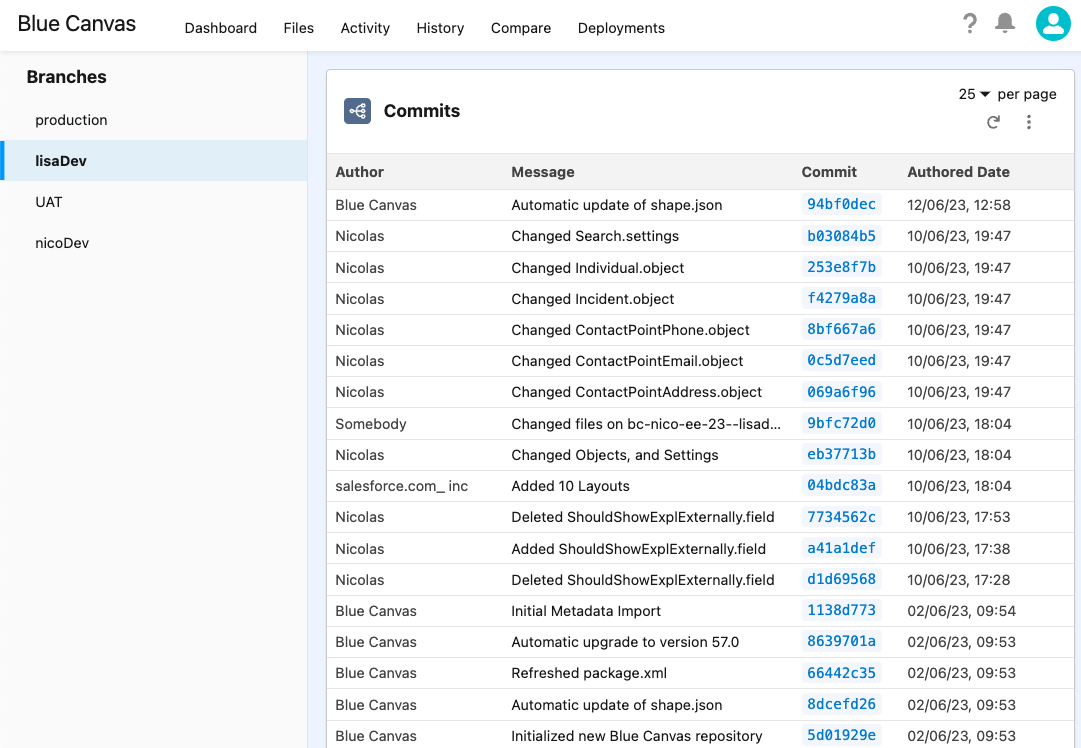
Compare, to review differences between orgs
The Compare tab allows you to diff between different Orgs and their associated Git branches. Let’s say you want to see what is different between your UAT Org and your Production Org. Simply click the Compare tab.
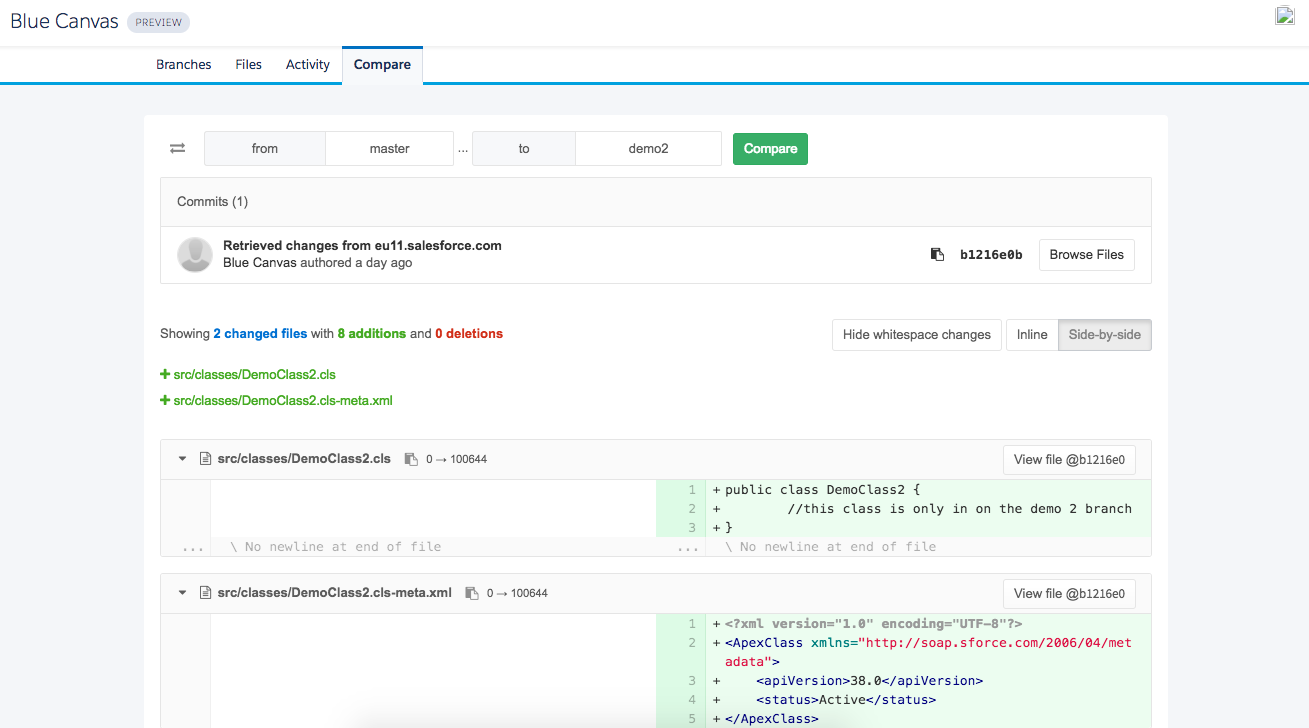
At the top of the page there is a “from” field that includes a dropdown of all your connected Orgs. Select your UAT Org. Now in the “to” field dropdown select the master branch. Click “Compare”.
You will now see a line by line comparison of everything that is different between your Orgs. You can select Inline view:
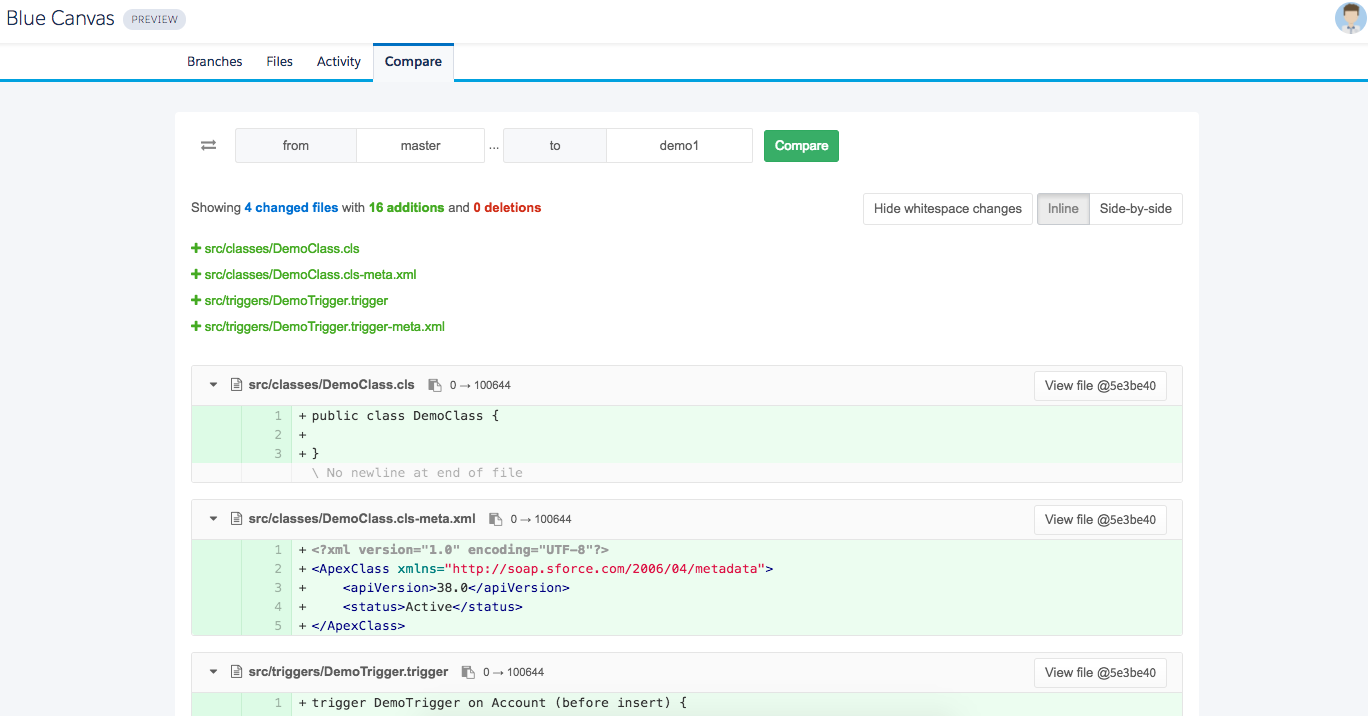
or Side-by-side view:
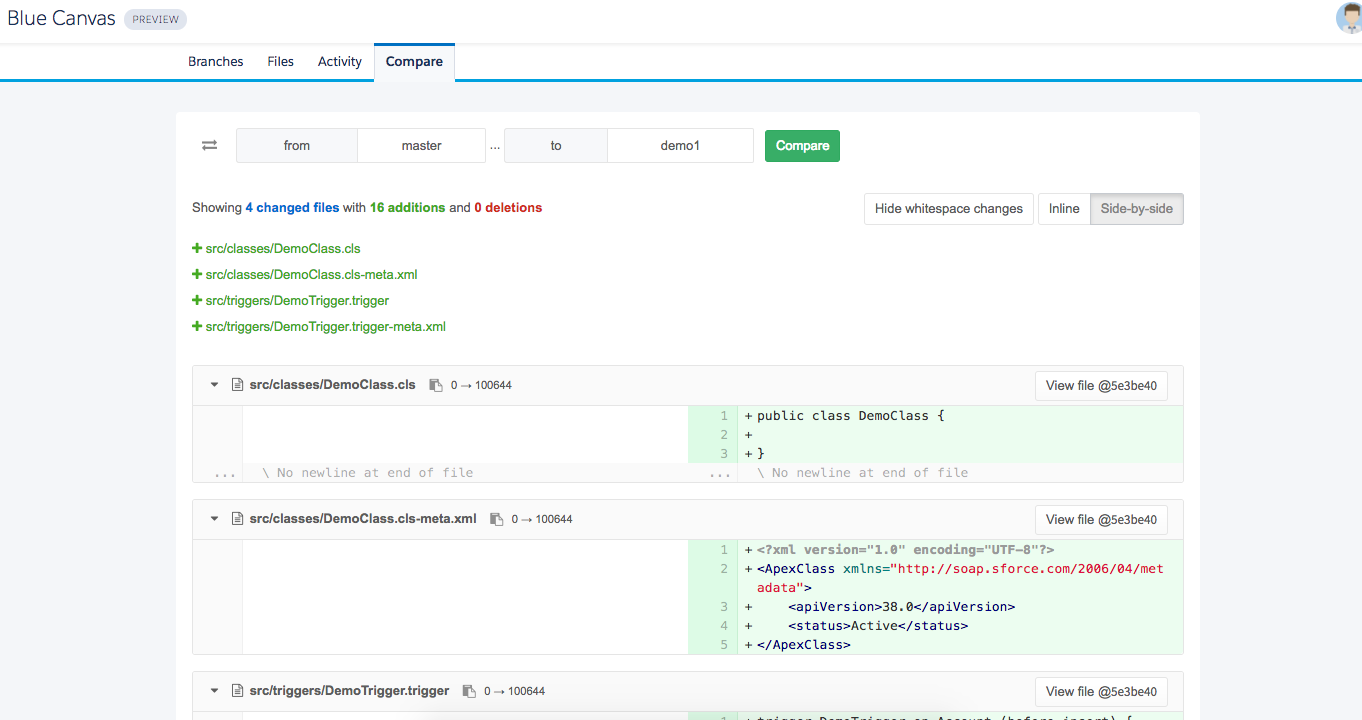
Deploy, to synch changes between Salesforce orgs
To deploy check out our docs on Deployment Requests.
Updated over 2 years ago
